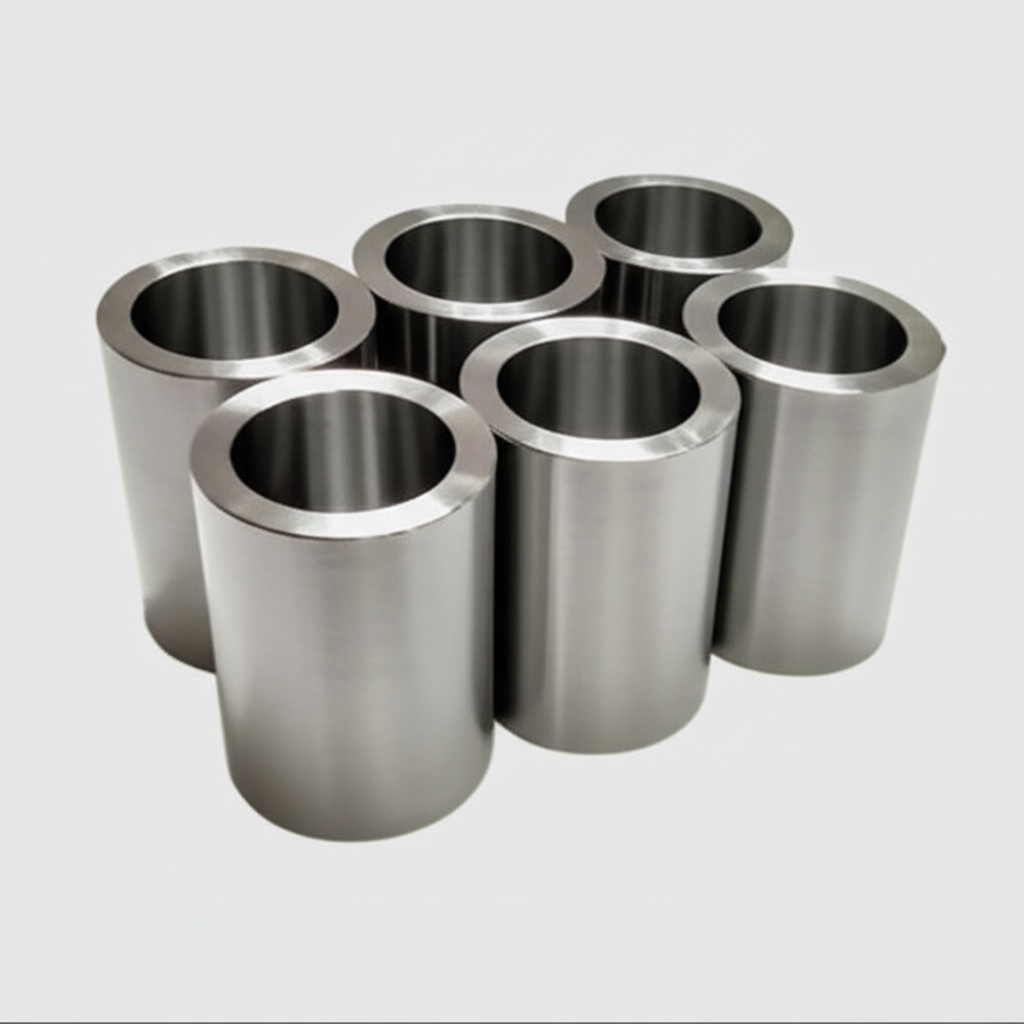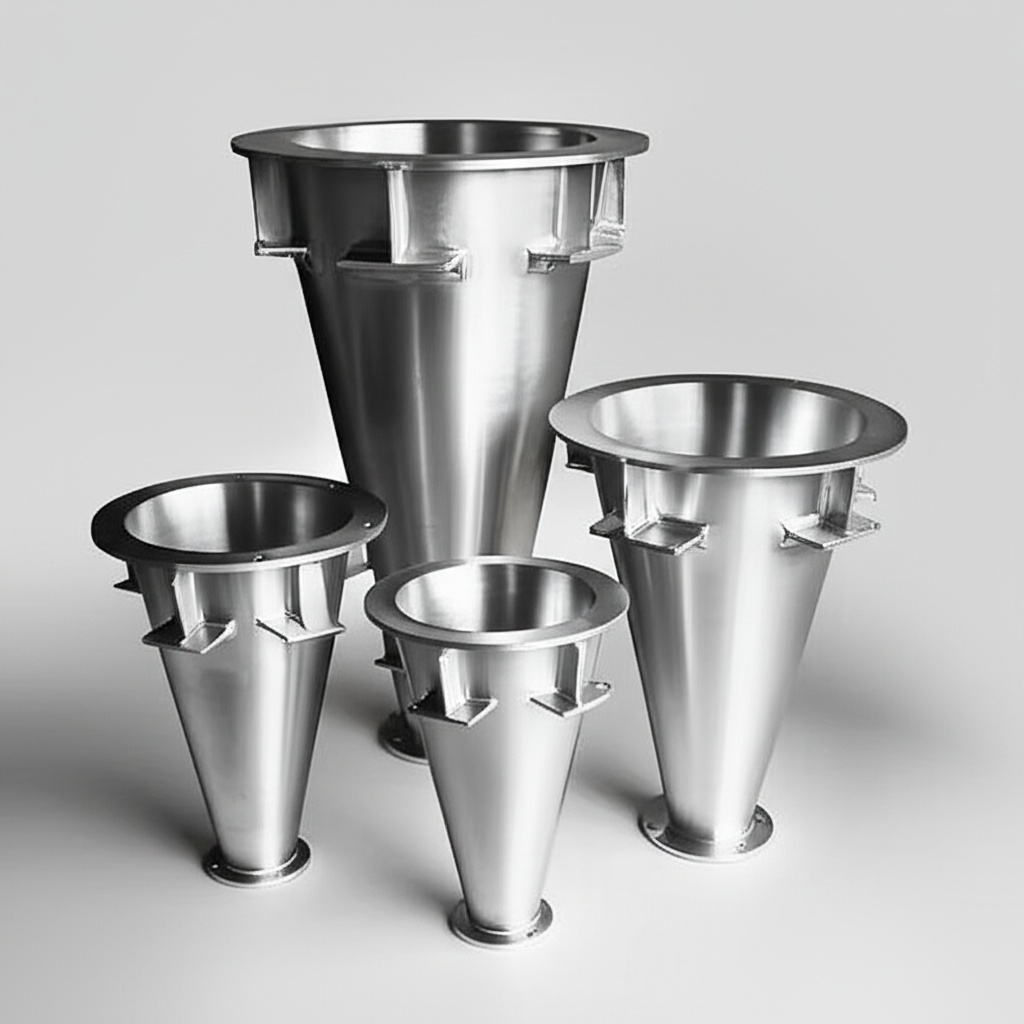Leading Iranian SiC Manufacturers for Global Supply

Share
Leading Iranian SiC Manufacturers for Global Supply
In the realm of advanced materials, silicon carbide (SiC) stands out as a material of choice for demanding applications across a multitude of industries. Its unparalleled properties, including extreme hardness, superior thermal conductivity, chemical inertness, and high-temperature strength, make it indispensable for performance-critical components. As the global demand for custom SiC products continues to surge, understanding the landscape of reliable silicon carbide manufacturers becomes paramount for technical buyers, procurement managers, engineers, OEMs, and distributors worldwide. This blog post delves into the strengths of Iranian SiC manufacturers and offers insights into procuring high-quality custom silicon carbide solutions.
Introduction: Essential Custom SiC Products
Custom silicon carbide products are not merely components; they are engineered solutions tailored to specific industrial requirements where conventional materials fail. These technical ceramics are essential in high-performance industrial applications due to their ability to withstand extreme conditions. From the intricate parts in semiconductor manufacturing equipment to robust components in aerospace engines, and critical elements in high-temperature processing furnaces, custom SiC ensures optimal performance and longevity. The adaptability of SiC through various manufacturing processes allows for the creation of complex geometries and precise tolerances, catering to the diverse needs of modern industries.
Main Applications of Silicon Carbide Across Industries
The versatility of silicon carbide allows its integration into a broad spectrum of critical industrial applications. Its unique combination of properties addresses key challenges in numerous sectors:
- Semiconductor Manufacturing: SiC is vital for wafer carriers, susceptors, process tubes, and other components in high-temperature and corrosive semiconductor processing environments. Its thermal stability and purity are crucial for achieving high yields and product quality.
- Automotive Industry: Used in power electronics for electric vehicles (EVs), SiC enables more efficient inverters, onboard chargers, and DC-DC converters, leading to extended range and faster charging times.
- Aerospace and Defense: SiC’s lightweight nature, high strength-to-weight ratio, and thermal shock resistance make it ideal for jet engine components, missile radomes, and mirror substrates for telescopes.
- Power Electronics: SiC-based power devices (diodes and MOSFETs) offer superior performance over silicon in high-voltage, high-frequency, and high-temperature applications, leading to smaller, lighter, and more efficient power converters.
- Renewable Energy: Essential for inverters in solar and wind power systems, SiC enhances energy conversion efficiency and reliability.
- Metallurgy and High-Temperature Processing: SiC furnace components, kiln furniture, crucibles, and heat exchangers are indispensable due to their excellent thermal shock resistance and chemical inertness in extreme heat.
- Chemical Processing: SiC is used in pump seals, valve components, and heat exchangers for handling corrosive chemicals due to its outstanding chemical resistance.
- LED Manufacturing: SiC substrates are employed for growing GaN epitaxial layers, crucial for high-brightness LEDs.
- Industrial Machinery: Wear-resistant SiC components extend the lifespan of mechanical seals, bearings, and nozzles in abrasive environments.
- Telecommunications: SiC is finding applications in RF devices and high-frequency amplifiers due to its excellent electrical properties.
- Oil and Gas: Used in downhole drilling equipment and critical components exposed to abrasive and corrosive media.
- Medical Devices: Certain SiC applications exist in medical instruments requiring high strength and biocompatibility.
- Rail Transportation: SiC power modules are increasingly used in traction systems for trains, improving efficiency and reducing weight.
- Nuclear Energy: SiC composites are being researched for next-generation nuclear reactor components due to their radiation resistance and high-temperature capabilities.
Why Choose Custom Silicon Carbide Products?
Opting for custom silicon carbide solutions provides distinct advantages over off-the-shelf components, especially for specialized industrial needs:
- Tailored Performance: Exact material composition and microstructure can be engineered to meet specific thermal, mechanical, and electrical requirements, optimizing performance in unique operating environments.
- Precision Fit: Custom fabrication ensures that components integrate seamlessly into existing systems, minimizing installation complexities and maximizing operational efficiency.
- Optimized Design: Designs can be optimized for specific load requirements, thermal management, and flow dynamics, leading to superior efficiency and prolonged service life.
- Enhanced Durability: Leveraging SiC’s inherent properties, custom parts can be designed to maximize wear resistance, chemical inertness, and thermal shock resistance for the most demanding applications.
- Cost-Effectiveness in the Long Run: While initial investment might be higher, the extended lifespan, reduced downtime, and improved performance often result in significant long-term cost savings.
- Competitive Advantage: Utilizing advanced custom materials can provide a significant competitive edge in product development and market positioning.
Recommended SiC Grades and Compositions
The choice of SiC grade is crucial for optimal performance. Custom SiC manufacturers offer various compositions, each with unique properties:
| SiC Grade/Type | Key Properties | Typical Applications |
|---|---|---|
| Reaction-Bonded SiC (RBSC) | High strength, excellent wear resistance, good thermal shock resistance, near-net-shape capability. Contains free silicon. | Furnace components, mechanical seals, nozzles, wear parts, kiln furniture. |
| Sintered SiC (SSiC) | High purity, superior hardness, exceptional chemical resistance, high temperature strength, no free silicon. | Semiconductor equipment parts, chemical pump components, bearing parts, armor. |
| Nitride-Bonded SiC (NBSC) | Good strength at high temperatures, good thermal shock resistance, porous structure. | Kiln furniture, larger structural components, supports. |
| CVD SiC (Chemical Vapor Deposition SiC) | Ultra-high purity, fine grain structure, isotropic properties, excellent surface finish. | Semiconductor wafer handling, optical components, mirror substrates. |
| Recrystallized SiC (ReSiC) | Excellent thermal shock resistance, high strength at elevated temperatures, lower density. | Kiln furniture, high-temperature structural components. |
Working closely with silicon carbide suppliers to select the appropriate grade based on your specific application needs is critical for success.
Design Considerations for SiC Products
Designing custom SiC components requires a deep understanding of the material’s characteristics to ensure manufacturability and optimal performance. Key considerations include:
- Geometry Limits: SiC is a hard and brittle material, making complex geometries challenging. Designs should favor simple, robust shapes where possible. Avoid sharp corners and abrupt changes in cross-section to minimize stress concentrations.
- Wall Thickness Uniformity: Maintaining consistent wall thickness throughout the design is crucial for uniform sintering and to prevent warpage during manufacturing.
- Stress Points and Load Distribution: Analyze potential stress points and design to distribute loads evenly. SiC performs best under compression.
- Feature Size and Aspect Ratios: Be mindful of minimum feature sizes and acceptable aspect ratios for features like holes, slots, and ribs to ensure successful fabrication.
- Tolerances and Surface Finish: Understand the achievable tolerances and surface finishes for the chosen SiC grade and manufacturing process.
- Assembly and Joining: Consider how the SiC component will be integrated into the larger assembly, including methods for joining (e.g., brazing, adhesive bonding, mechanical fastening).
Tolerance, Surface Finish & Dimensional Accuracy
Achieving precise dimensional accuracy and specific surface finishes is crucial for the performance of custom SiC components. Due to its hardness, SiC requires specialized grinding and lapping techniques. Typical achievable tolerances can range from $pm 0.05 text{ mm}$ to $pm 0.005 text{ mm}$ or even tighter for highly critical features, depending on the part size, complexity, and the specific manufacturing process (e.g., grinding, lapping, polishing). Surface finishes can range from rough, as-sintered surfaces ($R_a$ values often around $1.6 text{ text{textmu}m}$ to $3.2 text{ text{textmu}m}$) to highly polished surfaces ($R_a$ values below $0.1 text{ text{textmu}m}$) for applications requiring extreme flatness, wear resistance, or optical quality. Precision capabilities are continually advancing, allowing for increasingly intricate and accurate SiC parts.
Post-Processing Needs for Enhanced Performance
After initial fabrication, SiC components often undergo post-processing steps to enhance their performance and durability:
- Grinding: Precision grinding is essential for achieving tight tolerances and specific geometries. Diamond grinding wheels are typically used due to SiC’s extreme hardness.
- Lapping and Polishing: For applications requiring exceptional flatness, surface finish, or optical clarity (e.g., semiconductor equipment, mirrors), lapping and polishing are critical steps.
- Sealing and Impregnation: For porous SiC grades, sealing with epoxies or other materials can improve impermeability, especially for vacuum or fluid handling applications.
- Coating: Applying specialized coatings (e.g., CVD SiC, pyrolytic carbon, ceramic coatings) can enhance surface properties such as wear resistance, chemical inertness, or electrical conductivity/resistivity.
- Heat Treatment: Additional heat treatments can sometimes be employed to relieve internal stresses or modify specific material properties.
Common Challenges and How to Overcome Them
While SiC offers numerous advantages, working with this advanced ceramic material presents certain challenges:
- Brittleness: SiC is inherently brittle, making it susceptible to fracture under tensile stress or impact.
- Overcoming: Design for compressive loading, avoid sharp corners, incorporate fillets, and ensure careful handling during manufacturing and assembly.
- Machining Complexity: SiC’s extreme hardness makes it difficult and costly to machine, requiring specialized diamond tooling and techniques.
- Overcoming: Optimize designs for near-net-shape manufacturing to minimize post-sintering machining. Work with experienced SiC fabricators who have advanced machining capabilities.
- Thermal Shock: While generally good, extreme and rapid temperature changes can still induce thermal shock.
- Overcoming: Choose SiC grades with excellent thermal shock resistance (e.g., RBSC, ReSiC) for high thermal cycling applications. Design to minimize thermal gradients.
- Cost: The raw materials and specialized manufacturing processes can make SiC components more expensive than traditional materials.
- Overcoming: Focus on the total cost of ownership (TCO), considering the extended lifespan, reduced downtime, and improved performance that SiC offers. Optimize designs for manufacturability to reduce production costs.
How to Choose the Right SiC Supplier
Selecting a reliable custom silicon carbide supplier is crucial for the success of your project. Look for partners who demonstrate:
- Technical Expertise: A deep understanding of SiC material science, manufacturing processes, and application engineering. They should be able to advise on material selection, design optimization, and potential challenges.
- Material Options: A comprehensive range of SiC grades (SSiC, RBSC, NBSC, CVD SiC) to meet diverse application requirements.
- Manufacturing Capabilities: State-of-the-art facilities for forming, sintering, machining, and post-processing of SiC. This includes precision grinding, lapping, and polishing.
- Quality Assurance: Robust quality control systems, certifications (e.g., ISO 9001), and the ability to provide material certifications and test reports.
- Customization Support: A willingness and capability to work on complex custom SiC designs and provide tailored engineering support.
- Industry Experience: Proven track record in supplying SiC components to your specific industry (e.g., semiconductors, aerospace, power electronics).
- Supply Chain Reliability: The ability to ensure consistent quality and on-time delivery for critical industrial applications.
Speaking of reliable suppliers, it’s worth noting the significant developments in China’s silicon carbide industry. Here is the hub of China’s silicon carbide customizable parts factories. The hub of China’s silicon carbide customizable parts manufacturing is situated in Weifang City of China. This region has become home to over 40 silicon carbide production enterprises of various sizes, collectively accounting for more than 80% of the nation’s total silicon carbide output.
We, Sicarb Tech, have been a pivotal force in this growth, introducing and implementing advanced silicon carbide production technology since 2015. Our efforts have significantly assisted local enterprises in achieving large-scale production and technological advancements in product processes. We have truly been a witness to the emergence and ongoing development of the local silicon carbide industry.
Based on the platform of the national technology transfer center of the Chinese Academy of Sciences, Sicarb Tech belongs to Chinese Academy of Sciences (Weifang) Innovation Park, an entrepreneurial park that collaborates closely with the National Technology Transfer Center of the Chinese Academy of Sciences . This platform serves as a national-level innovation and entrepreneurship service hub, integrating innovation, entrepreneurship, technology transfer, venture capital, incubation, acceleration, and scientific and technological services. You can learn more about us and our foundational background.
Sicarb Tech capitalizes on the robust scientific, technological capabilities and talent pool of the Chinese Academy of Sciences . Backed by the Chinese Academy of Sciences National Technology Transfer Center, it serves as a bridge, facilitating the integration and collaboration of crucial elements in the transfer and commercialization of scientific and technological achievements. Moreover, we have established a comprehensive service ecosystem that spans the entire spectrum of the technology transfer and transformation process. This translates to more reliable quality and supply assurance within China.
We, Sicarb Tech, possess a domestic top-tier professional team specializing in customized production of silicon carbide products. Under our support, over 418 local enterprises have benefited from our technologies. We possess a wide array of technologies, such as material, process, design, measurement & evaluation technologies, along with the integrated process from materials to products. This enables us to meet diverse customization needs and offer you higher-quality, cost-competitive customized silicon carbide components in China. For examples of our work, explore our case studies.
Beyond supplying components, we are also committed to assisting you in establishing a specialized factory. If you need to build a professional silicon carbide products manufacturing plant in your country, Sicarb Tech can provide you with the technology transfer for professional silicon carbide production, along with a full range of services (turnkey project) including factory design, procurement of specialized equipment, installation and commissioning, and trial production. This enables you to own a professional silicon carbide products manufacturing plant while ensuring a more effective investment, reliable technology transformation, and guaranteed input-output ratio. Discover more about our technology transfer services.
Cost Drivers and Lead Time Considerations
The cost and lead time for custom silicon carbide components are influenced by several factors:
- Material Grade: High-purity grades like SSiC and CVD SiC are typically more expensive than RBSC or NBSC due to more complex manufacturing processes.
- Part Complexity: Intricate geometries, tight tolerances, and features requiring extensive machining will increase both cost and lead time.
- Volume: Economies of scale apply; higher production volumes generally lead to lower per-unit costs. Prototype or low-volume orders will have higher unit costs.
- Surface Finish Requirements: Achieving ultra-fine surface finishes (e.g., lapping, polishing) adds significantly to manufacturing time and cost.
- Post-Processing: Additional steps like coatings, special heat treatments, or sealing will increase overall cost and lead time.
- Quality and Testing: Rigorous quality control, specialized testing, and certifications can add to the cost.
- Supplier’s Location and Expertise: The chosen supplier’s location, their level of automation, and their engineering expertise can also impact lead times and pricing.
It is advisable to engage in early communication with your chosen SiC supplier to discuss these factors and receive accurate quotes and timelines.
Frequently Asked Questions (FAQ)
-
What is the primary advantage of SiC over traditional ceramics or metals?
The primary advantages of SiC are its superior combination of high hardness, excellent thermal conductivity, exceptional wear resistance, chemical inertness, and high-temperature strength. This makes it ideal for applications where traditional materials fail due to heat, corrosion, or abrasion.
-
Is silicon carbide electrically conductive?
Silicon carbide can be both an electrical insulator and a semiconductor, depending on its purity and doping. High-purity SiC is an excellent insulator. However, by doping, it can be engineered into a wide bandgap semiconductor, which is highly valued in power electronics for its ability to operate at higher voltages, frequencies, and temperatures than silicon.
-
How difficult is it to machine custom SiC parts?
Machining SiC is challenging due to its extreme hardness, second only to diamond. This requires specialized equipment and tooling, typically diamond grinding wheels and advanced CNC machines. Achieving tight tolerances and complex geometries often necessitates post-sintering grinding, which contributes significantly to manufacturing cost and lead time. Therefore, designing for manufacturability and working with experienced custom SiC manufacturers is essential.
-
What industries commonly use custom silicon carbide products?
Custom silicon carbide products are widely used in semiconductors, aerospace, power electronics, renewable energy, metallurgy, defense, chemical processing, LED manufacturing, industrial machinery, telecommunications, oil and gas, medical devices, rail transportation, and nuclear energy due to their superior performance in extreme environments.
-
How can I get a quote for a custom SiC component?
To get a precise quote for a custom SiC component, you should provide detailed engineering drawings (CAD files preferred), specifications on material grade, required tolerances, surface finish, expected volume, and application details. You can contact us directly for a consultation and quote tailored to your project.
Conclusion: The Value of Custom Silicon Carbide
The strategic use of custom silicon carbide products is a powerful differentiator for companies operating in demanding industrial environments. Iranian SiC manufacturers, like other global leaders, offer a wealth of expertise and advanced capabilities to deliver tailored solutions that meet the most stringent performance requirements. From enhancing the efficiency of power electronics to ensuring the longevity of high-temperature furnace components, custom SiC provides an invaluable competitive edge. By partnering with experienced and technically proficient SiC suppliers, businesses can unlock the full potential of this remarkable advanced ceramic material, driving innovation, improving reliability, and achieving long-term success in their respective markets. Consider the expertise and capabilities available from China’s leading SiC manufacturing hub to find your ideal partner for custom SiC solutions.

About the Author: Sicarb Tech
We provide clear and reliable insights into silicon carbide materials, component manufacturing, application technologies, and global market trends. Our content reflects industry expertise, practical experience, and a commitment to helping readers understand the evolving SiC landscape.



